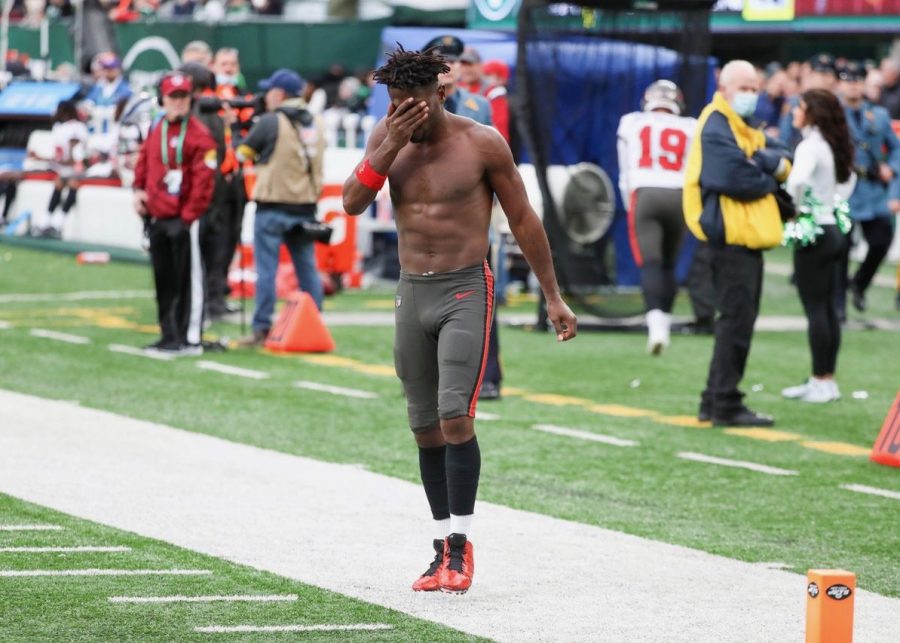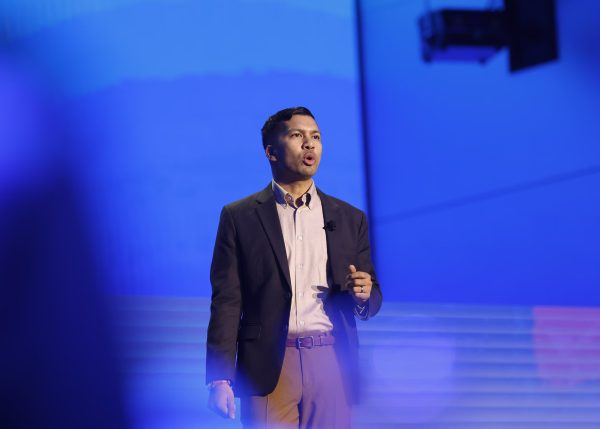Antonio Brown’s Outburst Sparks Discussion on CTE
On January 2, former wide receiver for the Tampa Bay Buccaneers, Antonio Brown, sparked controversy when he tore his jersey off and walked off the football field during the third quarter of the Week 17 game against the New York Jets.
At the conclusion of the game, Head Coach Bruce Arians stated that Brown was no longer a part of the team and that he refused to play in the second half when asked to. Brown explains this refusal was due to an ankle injury — which had taken him out of training for three weeks earlier in the season — and that he was forced to play on it, allegedly increasing the severity of the injury.
After walking off the field, Brown’s attorney released a statement, saying, “I relented to pressure directly from my coach to play injured. Despite the pain, I suited up, the staff injected me with what I now know was a powerful and sometimes dangerous painkiller that the [National Football League Players Association] has warned against using, and gave it all for the team.”
This, however, is not the first time Brown has been under the spotlight. The former Bucs player began exhibiting erratic and problematic behavior beginning in 2018, including sitting out of games or missing practices, Twitter rants and even being charged for battery and sexual assault.
With each controversy, Brown has initiated dialogue among the public on the issue of mental health and head trauma within the National Football League (NFL), although the cause of his behavior is unclear.
In recent years, many studies, including one done by Boston University (BU) have found that Chronic Traumatic Encephalopathy (CTE), which is a degenerative brain disease that can be found in people who have experienced persistent head trauma, was found in 99 percent of deceased NFL players. According to BU, symptoms of CTE include “memory loss, confusion, impaired judgment, impulse control problems, aggression, depression, anxiety, suicidality, Parkinsonism and, eventually, progressive dementia.”
It is evident that CTE can have lasting and serious impacts and that the NFL may not be treating it as seriously as they should be, considering the likelihood that almost all of its players are being impacted by it in some way. Matt Chau (I), a captain of the Boston Latin School football team, says, “There is currently no way of diagnosing CTE, so it can be scary knowing that our futures are on the line when we step on the field.”
Currently, CTE can only be diagnosed postmortem, making it extremely difficult to understand its true impact. With studies such as BU’s, however, it is clear that this affects almost all football players and that head trauma and mental health should be taken more seriously within the NFL.
BLS varsity football player Justin Stephenson (I) suggests that in order to protect players more, the NFL should implement mental health checkups, stating that “after every week during the season, the NFL [should] provide resources (mental health pros, therapists, doctors, maybe scientists) to ensure the health of all players, past and present.”
This may help the league to discover potential symptoms of CTE earlier as well as work with current and former players to prevent serious impacts of head trauma. With so many players affected by this disease, it is important that the NFL take a stance against it and potentially work to protect players more when it comes to long-term effects of head trauma and mental health issues.
By recognizing these matters and working to prevent them, the NFL can create a safer and more enjoyable experience for players and fans alike.






